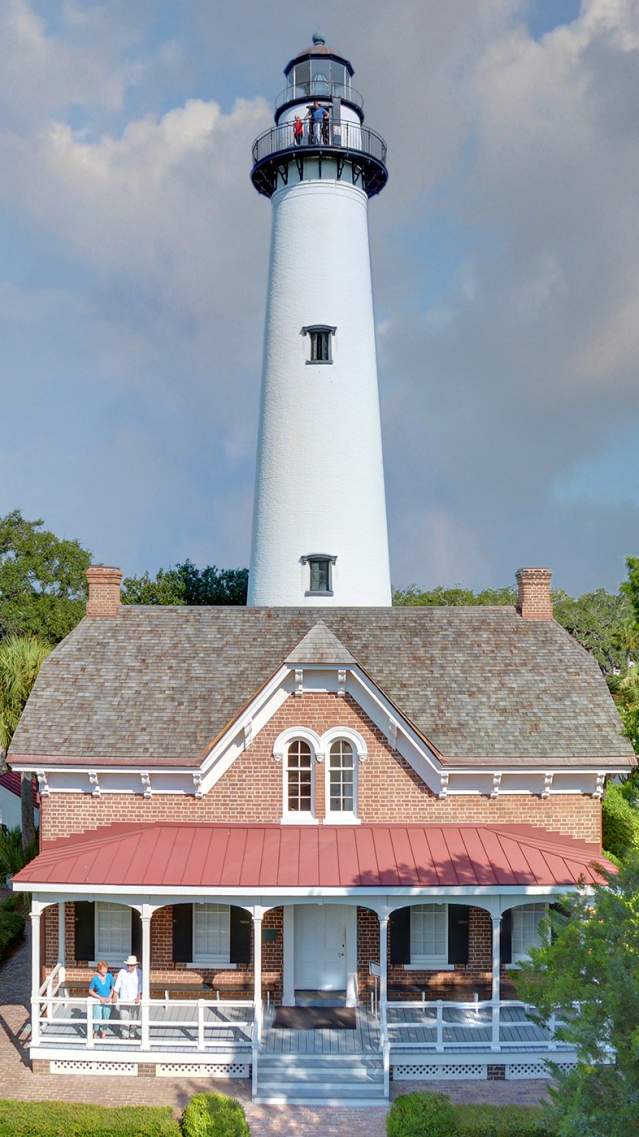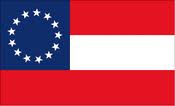History & Heritage
Rich in history, culture, forgotten heroes, and undiscovered towns and hamlets, the Golden Isles’ experience is one of the richest along the Atlantic seaboard. Southern cultural elements—including songs, stories, dances, food, and architecture—and other numerous factors define the area. No matter which historic area you visit first— St. Simons Island, Sea Island, Little St. Simons Island, Jekyll Island, or Brunswick, —you're sure to uncover more heritage and culture on each trip back to the Golden Isles!
Tracing the paths of the area’s first tourists gives insight into the lure of the coast. Following well-worn paths through the virgin forests or paddling down the waterways, early Native Americans annually enjoyed the area’s bounty of game and shellfish. Today, visible remains of shell rings, both on the mainland and the islands attest to eons of visitation.
Known as the Debatable Land, the area stretching from the Atlantic Ocean to the Gulf of Mexico later saw hooded Franciscans and Dominicans. Guided by the directive of the sword and cross, they built missions hoping to subjugate their native hosts. With access by the many branches of the Altamaha River, not only Native Americans and the Spanish but also trappers, explorers, and the French passed this way before the arrival of the British.
It is this co-mingling of different nations and people that make the area’s history so rich. Take time to explore it. One of the joys of travel is absorbing the heritage of others and appreciating their cultures. Quite often the memories of a special trip or place are these elements of heritage and culture. Visit the historic sites that enhance the story and let your footprints follow those who came before you.

Why are We Called the Golden Isles?
The Golden Isles is a place well named. A landscape and a legacy that is, in every way, golden. One needs only to witness a gorgeous sunrise over the ocean or bask in the beauty of the sun setting westward beyond the mainland to know the namesake of this stretch of Georgia’s coast.
How did the Golden Isles get its name?
From a historical perspective, the easy answer lies in the fanciful dreams of the coast’s earliest explorers who traveled from afar and waded ashore in pursuit of glittering treasures and riches. In fact, these lands came to be known in much of the world as the “Golden Islands.” In 1717, in his promising writings, Sir Robert Montgomery, a Scottish nobleman seeking to draw the support of wealthy Londoners in establishing a coastal colony in this area, gave our coast the “well-deserved denomination of the Golden Islands.”
The color gold prevails here; in the hues of our beautiful sandy beaches in the warmth of the summer’s sun, in the shades that paint the vast marsh grasses in winter and in the rich treasures that are experienced here, year-round, by residents and visitors.
Choose the story or the reason you wish. We invite you to discover for yourself everything that makes these places so irresistibly wonderful and so indisputably golden.
The Land of Five Flags
|
|
The flag of Spain was first raised over Georgia in 1526 when Lucas Vázquez de Ayllón arrived with 600 Spanish colonists to found the ill-fated settlement of San Miguel de Gualdape. |
|
|
From 1562 to 1564, the flag of France flew here as Jean Ribault, seeking a haven for French Huguenots, explored the Georgia coast and built fortifications. In 1565, Spanish troops expelled the French and re-established their rule until the early 1700s. |
|
|
In 1736, General James Edward Oglethorpe established Fort Frederica, the most expensive fort in the American colonies, on St. Simons Island. The flag of Great Britain flew here, signifying an era of British dominance that lasted until the American Revolution in 1776 when our first national flag - with 13 stars and 13 stripes - was flown. |
|
|
The American flag was taken down in 1861 when Georgia joined its sister southern states in seceding from the union. The "Stars and Bars," the flag of the Confederate States of America, flew over the area until early 1862 when Union forces occupied the Georgia coast.
|
|
|
The end of the War Between the States in 1865 began a series of flags that changed as our country grew and new stars - one for each new state - were added. Today's flag, with 50 stars and 13 stripes, waves proudly over our state and nation. |
Historic Stained Glass
Gorgeous works of stained glass, in themes both sacred and historic, can be found throughout the Golden Isles.
Examples include:
King and Prince Beach & Golf Resort, St. Simons Island
Historic island sites are depicted in arched pictorial windows, created in 1940, in the ocean side Delegal Room of the Resort.
Faith Chapel, Historic District, Jekyll Island
This small church, built in 1904, has two inspiring stained glass windows. Most notable is the window bearing the signature of Louis Tiffany.
Lovely Lane Chapel, Epworth by the Sea, St. Simons Island
This quaint chapel was built in 1880 by Anson Dodge. In the early 1900s, the windows were removed and stored at Christ Church while the structure was used for non-religious purposes. They were re-installed in the 1940s.
Christ Church, Frederica, St. Simons Island
Built in 1884 by the Dodge family, this historic church possesses numerous stained glass windows of great beauty. The oldest, Confession of St. Peter, was created by Mayer & Company of Munich, Germany in 1899. One window is attributed to Louis Tiffany.
St. Paul's AME Church, Historic Brunswick
Brunswick's oldest black church has a handsome example of stained glass believed to have been commissioned by its members in 1922.
Other examples may be viewed at the following locations:
-
The Cloister Hotel's Spanish Lounge, Sea Island
-
The Jekyll Island Club Hotel, Jekyll Island
-
St. Mark's Episcopal Church (including one Tiffany window), Brunswick
-
St. Athanasius Episcopal Church, Brunswick
-
Beth Tefilloh Synagogue, Brunswick
-
First United Methodist Church, Brunswick
For a complete list of places of worship found in the Golden Isles, please click here.
The Enduring Story of Tabby
Lumber from trees. Bricks from the mud. Roofs of sod. Through the ages, settlers have used what the earth provides for building materials. Here in the coastal areas of Georgia and the southeast, nature provided early inhabitants with unique and remarkably strong building material. Its ingredients, combined in equal measure, are simple: lime (the ash from burned oyster shells), sand, water, and crushed shells. Its name is tabby and it was quite literally the foundation of much that was built along the coast over the centuries.
Tabby was developed in the 13th and 14th centuries on the North African coast and brought to the New World by the Spanish in the 16th Century.
The first tabby used by English-speaking people was in Charleston, SC, around 1690. When Georgia became a colony in 1733, settlers from South Carolina brought the “recipe” for this handy building material with them – building forts, chapels, lighthouses, hospitals, sugar mills, barns, breweries, homes and slave quarters. Native American shell “middens” (prehistoric heaps of discarded shells) were often the source for the number of shells needed to make tabby.
The look of this ancient, enduring building material remains quite popular today but is typically a “false tabby” mix of oyster shells and cement – not the authentic, labor-intensive compound of yesterday.
Historic examples of authentic tabby buildings and ruins can be found in locations throughout the Golden Isles.

Find Authentic Tabby in the Golden Isles
-
St. Simons Island: Fort Frederica National Monument, Cannon’s Point Preserve, Christ Church Cemetery, Historic Hamilton Plantation Cabins and Grounds at Gascoigne Bluff
-
Jekyll Island: Horton House ruins on Riverview Drive, Hollybourne Cottage, National Historic Landmark District
Learn more about the Golden Isles' unique heritage and culture, or spend a weekend exploring Southern history on our self-guided, history-filled tour of the region.
Liberty Ships

During World War II, Brunswick shipyards bustled with activity critical to America's war efforts. Between 1943 and 1945, the shipyard built 99 of these 447-foot cargo vessels. With no name painted on their bows thus preventing the enemy from detecting the vessels' mission or cargo, these ships sailed the Atlantic and Pacific loaded with equipment and supplies.
The dedication of the men and women of the shipyards was best exemplified during December 1944. Receiving word that the Navy would require six ships during that month, the shipyard workers, instead, guaranteed seven and requested that they not be paid for the extra work required including work done on Christmas Day!
A 23-foot scale replica of a Liberty is displayed on the grounds of the Mary Ross Waterfront Park in downtown Brunswick. The park is located at the western end of Gloucester Street.
[Photograph of the Liberty ship Joseph M. Terrell at the docks of J.A. Jones Construction Company shipyard, Brunswick, Georgia, 1944]
Timeline
Dating all the way back to 25,000 B.C., the Golden Isles has played a role in the history and development of coastal Georgia. Today, the region is packed with historical markers. Read on to uncover the immersive past of the Golden Isles.


The Golden Isles formed following the Pleistocene Ice Age. Larger islands, such as St. Simons Island, are estimated to be between 35,000 – 40,000 years old. The smaller islands, like Little St. Simons Island, were formed from the larger islands and are believed to be about 5,000 – 7,000 years old.
Guale and Mocama Indians made their way to the coast, fishing, hunting and gathering oysters to survive in the area. Middens, large areas of oyster shells and other refuse discarded by Native Americans, still exist today and can be seen in undeveloped areas on St. Simons Island and on Little St. Simons Island.
Spanish missions were established along the coast. A prominent mission formed at Fort King George in present-day Darien, about 10 miles north of Brunswick. This mission, called Santo Domingo Talejo, later moved to the northern end of St. Simons Island and was renamed Asao.

Fort Frederica and the town of Frederica was established by British General James Oglethorpe on the west side of St. Simons Island. 44 men and 72 women and children were the first settlers at Frederica. A second fort, Fort St. Simons, was built a few years later near the present day Lighthouse and Pier area.

The troops at Fort Frederica sprang to action July 1742 for the Battle of Bloody Marsh. With the help of the Scottish Highlanders from Darien, Oglethorpe’s men defeated the Spanish, who were planning to take over the Georgia coast and add it to their Florida territory.
Following the military successes on St. Simons Island, England signed a peace treaty with Spain. British troops were withdrawn from Fort Frederica. A fire in 1758 badly damaged the town of Frederica and it eventually became a lost town.

The first St. Simons Lighthouse was completed. The lighthouse was built by James Gould. The original lighthouse stood 85 feet tall and its base was made of tabby, part of which probably came from the ruins at Frederica. This lighthouse was later destroyed by Confederate troops during the Civil War to prevent Union forces from using it to navigate the coast. The current lighthouse was built in 1872 and still serves as an active aid to navigation.

Christ Church, chartered in 1808, was built near the site of Fort Frederica. The church was also badly damaged during the Civil War. Anson Dodge, Jr. rebuilt Christ Church in 1884 as a memorial to his first wife, who died in India on their honeymoon.

During the plantation period, there were 10-14 plantations located on St. Simons Island. Plantations, like Hofwyl-Broadfield Plantation, were also found in Brunswick as well as on Jekyll Island. Rice, cotton, sugar and other agricultural products were grown on these plantations. Rice was produced at Hofwyl-Broadfield Plantation until 1913, when the plantation transitioned to a dairy farm. Hofwyl-Broadfield Plantation is still standing today and is open to the public for tours.

Neptune Small was born into slavery at Retreat Plantation on St. Simons Island. He was chosen to look after the plantation owners’ son Henry Lord Page King. The two formed a close bond and when King enlisted in the Civil War in 1861, Neptune accompanied him. Henry was fatally shot during a battle in Virginia and Neptune dutifully recovered his body from the battlefield and brought it back to Georgia to be buried. Small later bought property and built a house north of the St. Simons Pier in what would become the African-American community called “South End.” Today, the area is known as Neptune Park. View a handcrafted sculpture of Neptune Small by local artist Kevin Pullen at the St. Simons Welcome Center, 529 Beachview Drive.
The Wanderer, the last ship to smuggle enslaved people from Africa to America made landfall on Jekyll Island. Congress passed the Slave Importation Act in 1807, making the importation of slaves illegal. The Wanderer, a luxury sailing vessel known for its high speed, was secretly converted into a slave ship. The ship arrived on Jekyll Island with 409 slaves acquired in West Africa, and news rapidly spread. The owners of the ship were taken to federal court, but unfortunately prosecutors were unable to prove the case, resulting in a not guilty verdict.
First African Baptist Church was organized at Pike's Bluff Plantation on St. Simons Island. At most plantations across the south. slaves were prohibited from practicing religion. However, slaves on St. Simons Island had the opportunity to form a church and congregate regularly. Slaves from the island's plantations attended First African Baptist Church each Sunday. The church can be visited at 5800 Frederica Road, St. Simons Island.
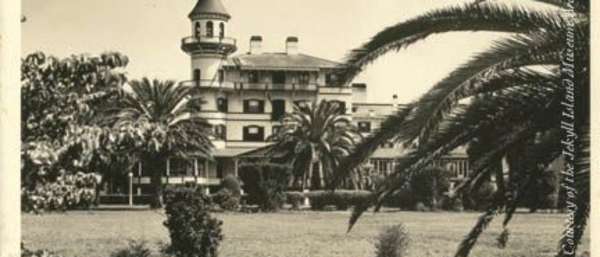
Jekyll Island Club, an exclusive club consisting of America’s most elite, was established after the island was purchased from the island’s original owners for $125,000. The Club was built by 1887 and opened its doors to the Pulitzers, Rockefellers, Goodyears, Morgans and the like. The rich and famous enjoyed Jekyll Island each year from Christmas to Easter until the start of World War II. The state of Georgia bought the island in 1947.

F.J. Torras Causeway was built, connecting Brunswick and St. Simons Island. The series of bridges were designed by Brunswick native Fernando Joseph Torras, who also served as Brunswick’s city manager for more than 30 years. The causeway was named for Torras following his death in 1953.
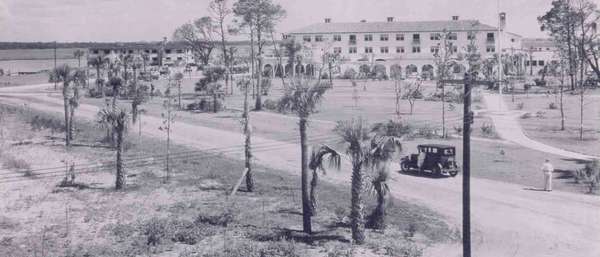
The Cloister at Sea Island opened. Howard Coffin first purchased the island in 1926 and hired renowned architect Addison Mizner to design the original Cloister Hotel. The Plantation Course at Sea Island Golf Club, opened in the summer of 1927.
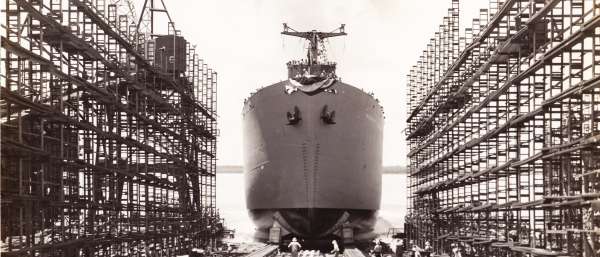
During World War II, Brunswick’s shipyards bustled with activity critical to America’s war efforts. Approximately 16,000 workers were employed in the shipyards where they built 99 liberty ships. NAS Glynco, now currently the site of the Federal Law Enforcement Training Center, began producing blimps used to escort U.S. cargo ships through the Atlantic Ocean. The base featured two giant wooden hangers, each about the size of 6 football fields and was the only naval air station to accommodate all types of aircraft – blimps, propeller planes, jets and helicopters. NAS Glynco was decommissioned in 1974.
